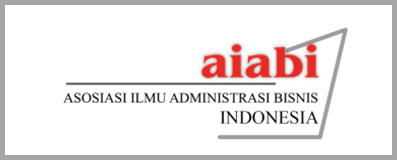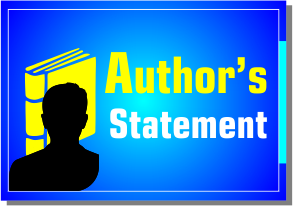Era Ekonomi Berkelanjutan: Studi literatur tentang Gerakan Bisnis Berkelanjutan
DOI:
https://doi.org/10.31334/bijak.v17i1.821Keywords:
Sustainable Economy, Environmental EconomicsAbstract
At present, awareness of the importance of maintaining environmental sustainability is increasingly widespread. The global community has also realized that this earth does not belong to this generation alone. In each period, various kinds of movements were introduced to encourage sustainable development. But what exactly is the difference between these proposed movements? This research with the literature review method will identify sustainable business movements from 1990 to the present. From the results of existing identification, this study will recommend which movements are realistic to implement in Indonesia, which has a unique character than other countries in the world.References
Addison, T., Arndt, C., & Tarp, F. (2011). The triple crisis and the global aid architecture. African Development Review, 23(4), 461-478.
Bappenas. (2017). Untuk Mewujudkan Nawa Cita Harus Ada Perubahan Paradigma dalam Perencanaan Pembangunan. Simpul, 29.
Barbier, E. B. (2010). A global green new deal: Rethinking the economic recovery: Cambridge University Press.
Bargh, M. (2014). A blue economy for Aotearoa New Zealand? Environment, development and sustainability, 16(3), 459-470.
Boulding, K. (1966). E., 1966, the economics of the coming spaceship earth. New York.
Bullard, N., & Müller, T. (2012). Beyond the ‘green economy’: System change, not climate change? Development, 55(1), 54-62.
Cameron, A., & Stuart, C. (2012). A guidebook to the Green Economy: Issue 1: Green Economy, Green Growth, and Low-Carbon Development–history, definitions and a guide to recent publications. New York: UNDESA, Division for Sustainable Development, 65.
Cleveland, C. J., & Morris, C. G. (2013). Handbook of energy: chronologies, top ten lists, and word clouds: Elsevier.
Cooper, T. (2010). Recycling modernity: waste and environmental history. History Compass, 8(9), 1114-1125.
D'amato, D., Droste, N., Winkler, K., & Toppinen, A. (2019). Thinking green, circular or bio: Eliciting researchers' perspectives on a sustainable economy with Q method. Journal of Cleaner Production, 230, 460-476.
Dinarto, D. (2017). Indonesia’s Blue Economy Initiative: Rethinking Maritime Security Challenges.
Diyar, S., Akparova, A., Toktabayev, A., & Tyutunnikova, M. (2014). Green Economy–Innovation-based Development of Kazakhstan. Procedia-Social and Behavioral Sciences, 140, 695-699.
Everest-Phillips, M. (2014). Small, So Simple?: Complexity in Small Island Developing States: UNDP Global Centre for Public Service Excellence.
Fink, A. (2019). Conducting research literature reviews: From the internet to paper: Sage publications.
Green Economy Coalition. (2010). Green, fair and productive: How the 2012 Rio Conference can move the world towards sustainability. Retrieved from
Hunter, J. S., & Benforado, D. M. (1987). Life cycle approach to effective waste minimization. JAPCA, 37(10), 1206-1210.
Huxley, A.-M. (2015). Australian Blue Paper No 1: The BLUE ECONOMY10 Years -100 Innovations100 MILLION JOBS. Retrieved from Victoria: www.moss.org.au
ICC. (2012). Green Economy Roadmap. A Guide for Business, Policymakers and Society.: International Chamber of Commerce.
Jackson, T. (1993). Clean Production Strategies Developing Preventive Environmental Management in the Industrial Economy: CRC Press.
Kasztelan, A. (2017). Green growth, green economy and sustainable development: terminological and relational discourse. Prague Economic Papers, 26(4), 487-499.
Kirchherr, J., Reike, D., & Hekkert, M. (2017). Conceptualizing the circular economy: An analysis of 114 definitions. Resources, conservation and recycling, 127, 221-232.
Korhonen, J., Honkasalo, A., & Seppälä, J. (2018). Circular economy: the concept and its limitations. Ecological economics, 143, 37-46.
Lienig, J., & Bruemmer, H. (2017). Recycling Requirements and Design for Environmental Compliance Fundamentals of Electronic Systems Design (pp. 193-218): Springer.
Loiseau, E., Saikku, L., Antikainen, R., Droste, N., Hansjürgens, B., Pitkänen, K., . . . Thomsen, M. (2016). Green economy and related concepts: An overview. Journal of Cleaner Production, 139, 361-371.
Lounsbury, M. (1997). Exploring the institutional tool kit: The rise of recycling in the US solid waste field. American Behavioral Scientist, 40(4), 465-477.
Ojovan, M. I., Lee, W. E., & Kalmykov, S. N. (2019). An introduction to nuclear waste immobilisation: Elsevier.
Pauli, G. A. (2010). The blue economy: 10 years, 100 innovations, 100 million jobs: Paradigm publications.
Pearce, D., Markandya, A., & Barbier, E. (1989). Blueprint for a green economy. London: Earthscan.
Phillips, P. S., Pratt, R. M., & Pike, K. (2001). An analysis of UK waste minimization clubs: key requirements for future cost effective developments. Waste management, 21(4), 389-404.
Rosenfeld, P. E., & Feng, L. (2011). Risks of hazardous wastes: William Andrew.
Sassanelli, C., Rosa, P., Rocca, R., & Terzi, S. (2019). Circular economy performance assessment methods: A systematic literature review. Journal of Cleaner Production.
Shrum, L., Lowrey, T. M., & McCarty, J. A. (1994). Recycling as a marketing problem: a framework for strategy development. Psychology & Marketing, 11(4), 393-416.
Smith, M. S., Cook, C., Sokona, Y., Elmqvist, T., Fukushi, K., Broadgate, W., & Jarzebski, M. P. (2018). Advancing sustainability science for the SDGs. Sustainability science, 13(6), 1483-1487.
Tam, V. W., & Tam, C. (2006). Evaluations of existing waste recycling methods: a Hong Kong study. Building and Environment, 41(12), 1649-1660.
Taylor, P. R. (1874). The Kroll Institute for Extractive Metallurgy. Colorado School of Mines.
Tóth, G. (2019). Circular Economy and its Comparison with 14 Other Business Sustainability Movements. Resources, 8(4), 159.
Downloads
Published
Issue
Section
License

This work is licensed under a Creative Commons Attribution-ShareAlike 4.0 International License
Please find the rights and licenses in Majalah Ilmiah Bijak By submitting the article/manuscript of the article, the author(s) agree with this policy. No specific document sign-off is required.
- License
The commercial use of the article will be governed by the Creative Commons Attribution license as currently displayed on Creative Commons Attribution-ShareAlike 4.0 International License.
2. Author(s)' Warranties
The author warrants that the article is original, written by stated author(s), has not been published before, contains no unlawful statements, does not infringe the rights of others, is subject to copyright that is vested exclusively in the author and free of any third party rights, and that any necessary written permissions to quote from other sources have been obtained by the author(s).
3. User Rights
Majalah Ilmiah Bijak spirit is to disseminate articles published are as free as possible. Under the Creative Commons license, Majalah Ilmiah Bijak permits users to copy, distribute, display, and perform the work for non-commercial purposes only. Users will also need to attribute authors and Majalah Ilmiah Bijak on distributing works in the journal and other media of publications.
4. Co-Authorship
If the article was jointly prepared by more than one author, any authors submitting the manuscript warrants that he/she has been authorized by all co-authors to be agreed on this copyright and license notice (agreement) on their behalf, and agrees to inform his/her co-authors of the terms of this policy. Jurnal Bijak will not be held liable for anything that may arise due to the author(s) internal dispute. Majalah Ilmiah Bijak will only communicate with the corresponding author.
5. Miscellaneous
Majalah Ilmiah Bijak will publish the article (or have it published) in the journal if the article’s editorial process is successfully completed. Jurnal Bijak editors may modify the article to a style of punctuation, spelling, capitalization, referencing and usage that deems appropriate. The author acknowledges that the article may be published so that it will be publicly accessible and such access will be free of charge for the readers as mentioned in point 3.
Every accepted manuscript should be accompanied by "Copyright Transfer Agreement"prior to the article publication.





1.png)




